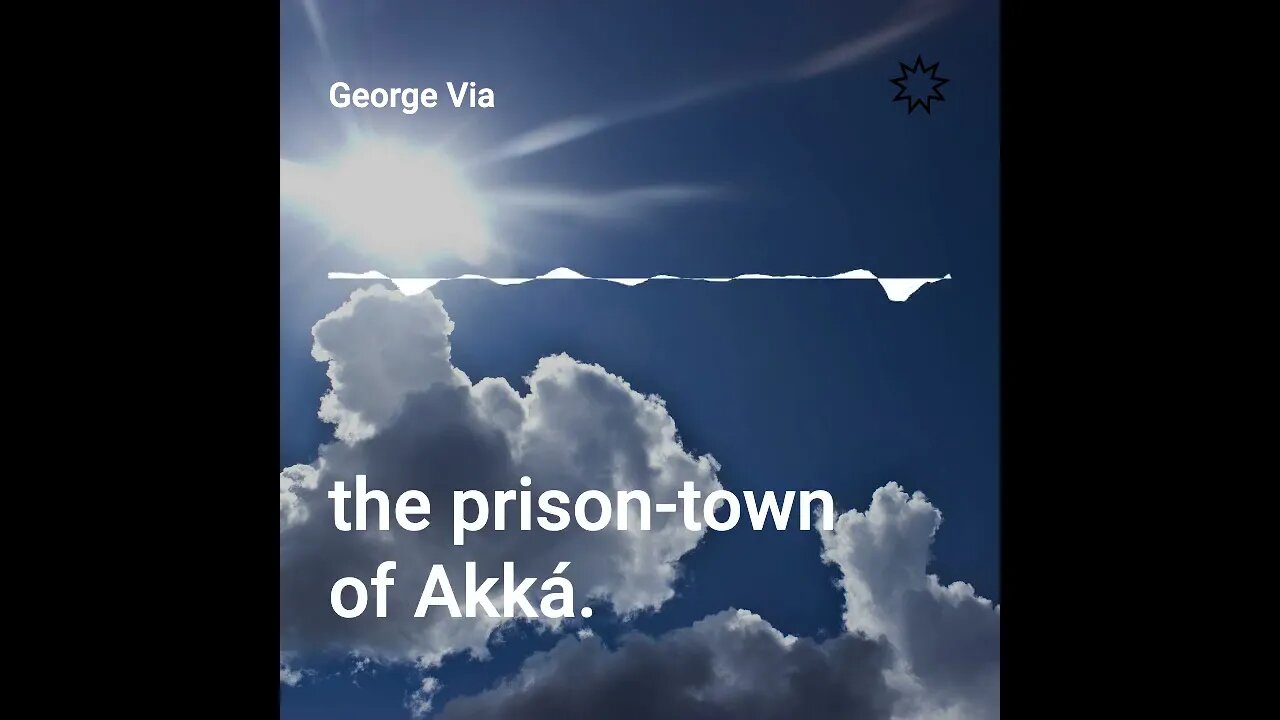Premium Only Content

God Passes By - Forward paragraph #09
[00:00:00] George Via: The first period [1844-1853] , centers around the gentle, the youthful and irresistible person of the Báb, matchless in His meekness, imperturbable in His serenity, magnetic in His utterance, unrivaled in the dramatic episodes of His swift and tragic ministry. It begins with the Declaration of His Mission, culminates in His martyrdom, and ends in a veritable orgy of religious massacre revolting in its hideousness.
[00:00:33] It is characterized by nine years of fierce and relentless contest, whose theatre was the whole of Persia, in which above ten thousand heroes laid down their lives, in which two sovereigns of the Qájár dynasty and their wicked ministers participated, and which was supported by the entire Shí'ah ecclesiastical hierarchy, by the military resources of the state, and by the implacable hostility of the masses.
[00:00:58] The second period [1853-1892] derives its inspiration from the august figure of Bahá'u'lláh, preeminent in holiness, awesome in the majesty of His strength and power, unapproachable in the transcendent brightness of His glory. It opens with the first stirrings, in the soul of Bahá'u'lláh while in the Síyáh-Chál of Tihrán, of the Revelation anticipated by the Báb, attains its plenitude in the proclamation of that Revelation to the kings and ecclesiastical leaders of the earth, and terminates in the ascension of its Author in the vicinity of the prison-town of Akká.
[00:01:40] It extends over thirty-nine years of continuous, of unprecedented and overpowering Revelation, is marked by the propagation of the Faith to the neighboring territories of Turkey, of Russia, of 'Iráq, of Syria, of Egypt and of India, and is distinguished by a corresponding aggravation of hostility, represented by the united attacks launched by the Sháh of Persia and the Sultán of Turkey, the two admittedly most powerful potentates of the East, as well as by the opposition of the twin sacerdotal orders of Shí'ah and Sunní Islám.
[00:02:20] The third period [1892-1921] revolves around the vibrant personality of 'Abdu'l-Bahá, mysterious in His essence, unique in His station, astoundingly potent in both the charm and strength of His character. It commences with the announcement of the Covenant of Bahá'u'lláh, a document without parallel in the history of any earlier Dispensation, attains its climax in the emphatic assertion by the Center of that Covenant, in the City of the Covenant, of the unique character and far-reaching implications of that Document, and closes with His passing and the interment of His remains on Mt. Carmel. It will go down in history as a period of almost thirty years' duration, in which tragedies and triumphs have been so intertwined as to eclipse at one time the Orb of the Covenant, and at another time to pour forth its light over the continent of Europe, and as far as Australasia, the Far East and the North American continent.
[00:03:24] The fourth period [1921-1944] is motivated by the forces radiating from the Will and Testament of 'Abdu'l-Bahá, that Charter of Bahá'u'lláh's New World Order, the offspring resulting from the mystic intercourse between Him Who is the Source of the Law of God and the mind of the One Who is the vehicle and interpreter of that Law.
[00:03:48] The inception of this fourth, this last period of the first Bahá'í century synchronizes with the birth of the Formative Age of the Bahá'í Era, with the founding of the Administrative Order of the Faith of Bahá'u'lláh—a system which is at once the harbinger, the nucleus and pattern of His World Order.
[00:04:09] This period, covering the first twenty-three years of this Formative Age, has already been distinguished by an outburst of further hostility, of a different character, accelerating on the one hand the diffusion of the Faith over a still wider area in each of the five continents of the globe, and resulting on the other in the emancipation and the recognition of the independent status of several communities within its pale.
-
 1:28:42
1:28:42
Redacted News
5 hours agoBREAKING! SOMETHING BIG IS HAPPENING IN EUROPE ALL OUT WAR IS COMING AGAINST RUSSIA, TRUMP FURIOUS
108K263 -
 47:50
47:50
Candace Show Podcast
6 hours agoBREAKING: Judge Makes Statement Regarding Taylor Swift's Text Messages. | Candace Ep 155
94.3K105 -
 DVR
DVR
Josh Pate's College Football Show
3 hours agoCFB’s Most Hated Teams | FSU & Clemson Future | Big Ten Win Totals | Star Rankings Overrated?
5.76K -
 1:33:47
1:33:47
CatfishedOnline
4 hours agoGoing Live With Robert - Weekly Recap
19.4K -
 55:18
55:18
LFA TV
1 day agoEurope’s Sudden Turn Against America | TRUMPET DAILY 3.6.25 7PM
25.5K3 -
 4:21
4:21
Tundra Tactical
4 hours ago $1.38 earnedPam Bondi MUST Enforce Due Process NOW!
18.4K1 -
 56:42
56:42
VSiNLive
5 hours agoFollow the Money with Mitch Moss & Pauly Howard | Hour 1
43.6K1 -
 1:05:32
1:05:32
In The Litter Box w/ Jewels & Catturd
1 day agoShalom Hamas | In the Litter Box w/ Jewels & Catturd – Ep. 756 – 3/6/2025
98.7K37 -
 1:23:00
1:23:00
Sean Unpaved
7 hours ago $2.98 earnedNFL Free Agency
50.9K3 -
 18:25
18:25
Stephen Gardner
6 hours ago🔥The REAL REASON the Epstein Files are being HIDDEN | I CONFRONT Alan Dershowitz for details!
63.3K110